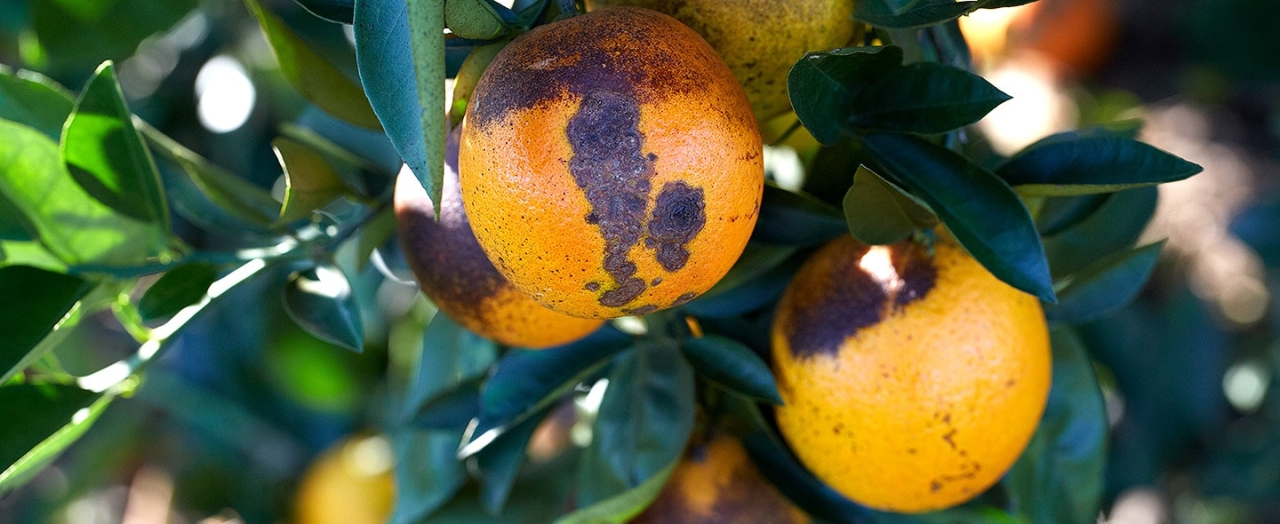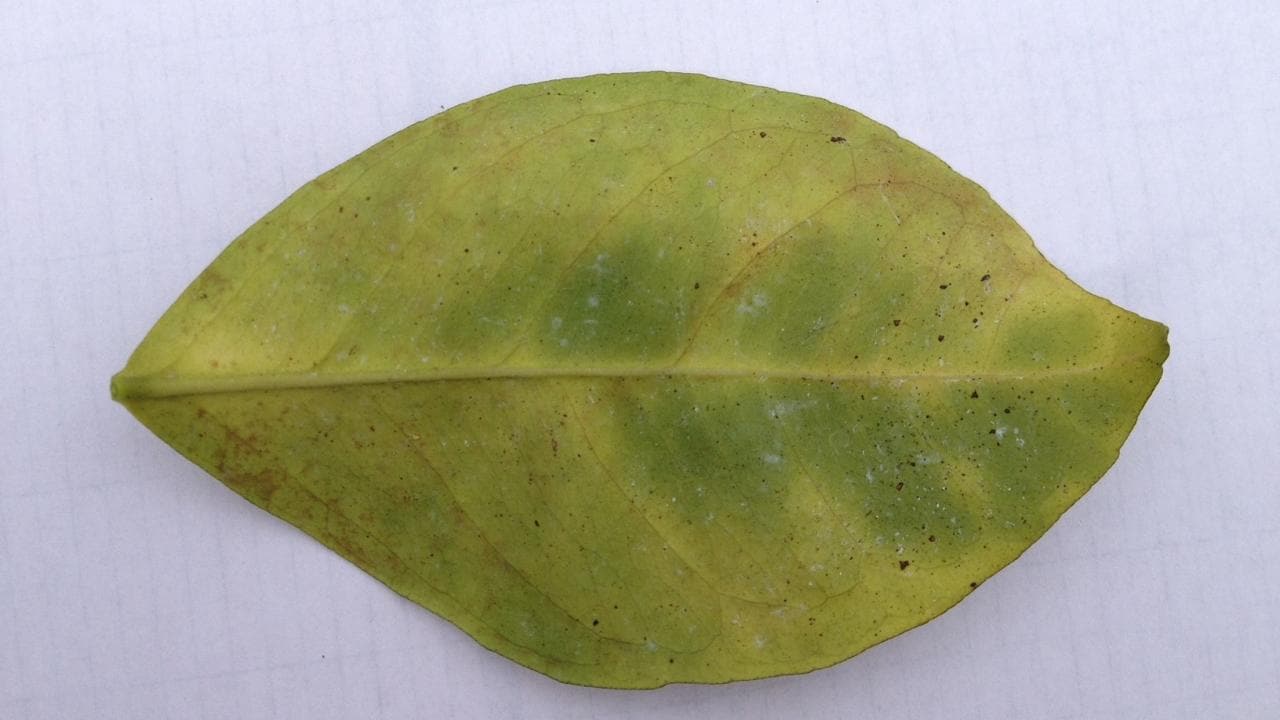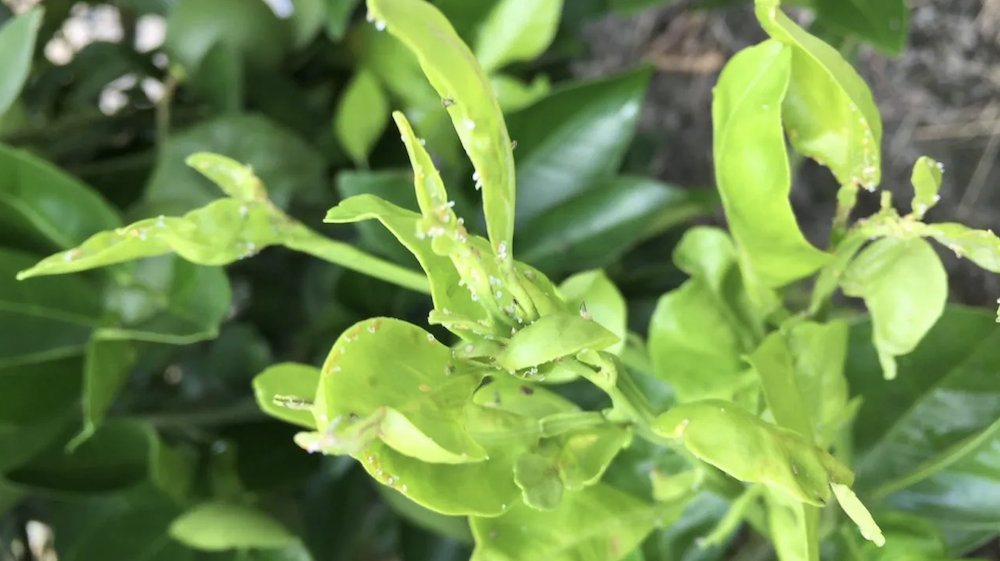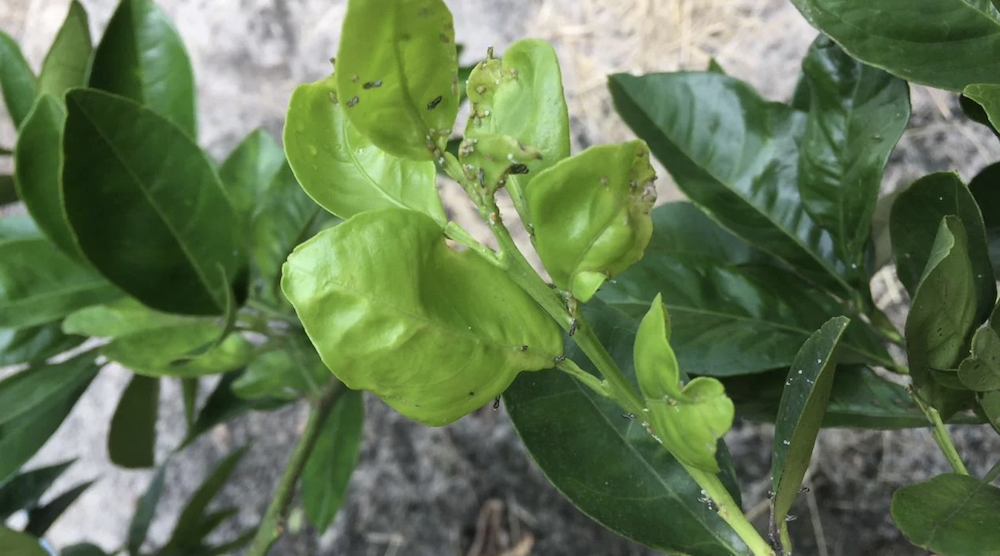Conquering Citrus Greening: Research Collaboration Breeds New Hope
Published 02-07-22
Submitted by Bayer

Citrus greening is a devastating and incurable disease destroying groves of citrus fruits across the globe. And it’s much more than your freshly-squeezed glass of orange juice at risk: without more innovative and affordable solutions to control it, citrus greening could lead to the loss of all fresh citrus within 10 to 15 years.
Whether it’s your morning glass of orange juice, a twist in an evening cocktail, adding zest to your fish or a finishing squeeze of lime for your guacamole, most people eat, drink, or smell something citrus in their daily lives. Beyond your plate and glass, you’ll also find citrus throughout your home, often in the form of citric acid, a flavoring and preservative agent with many uses. It is added to canned and jarred foods to help prevent botulism, to wine to reduce low acidity and improve taste, candles, soaps, personal care products, and vitamin supplements. The demand for citrus is high: in 2018, global citrus fruit production was 152 million tonnes. And in as little as 10 to 15 years, that number will go to zero —without a solution, fresh citrus production could completely disappear.

We must go back more than 100 years to identify the threat to global citrus production we face today. In 1919, a deadly bacterial plant disease was found in China – citrus greening, also known as Huanglongbing (HLB). The greening impairs the tree’s ability to take in nourishment, turning its fruit misshapen, bitter-tasting, and green. It is spread by the invasive Asian Citrus Psyllid (ACP). Smaller than a sesame seed, the pest feeds on citrus leaves and stems, which infects the trees with the bacterium (Candidatus Liberibacter asiaticus or CLas) that causes citrus greening. In the last fifteen years the bacterium has been detected in 7 of the top 10 orange-producing countries across the globe and has decimated groves in Asia, Brazil, the Dominican Republic and the U.S. Believed to have been introduced through imported citrus, a study by researchers at the University of Florida and Virginia Tech concluded that climate change will allow the psyllid —which thrives in temps between 60 and 90 degrees Fahrenheit —to continue to spread as global temperatures rise.

A Global Threat Spreading at Alarming Speed
One Asian Citrus Psyllid alone can infect an entire orange grove. The invasive pest multiplies quickly, producing up to 30 generations in one year, causing large-scale devastation. It comes as no surprise then that citrus greening has become a global threat in recent years, leading to the loss of more than one million citrus trees. As of 2019, the Jiangxi Province of China lost 25% of its groves and Brazil (where the disease was first spotted in 2004) has lost 52.6 million sweet orange trees, a 31% reduction. In Florida (where the disease was first detected in 2005) orange production has fallen by more than 75 percent and grapefruit production by 85 percent. Backyard citrus has virtually disappeared in some areas. It was detected in more than 1500 trees in California in 2019, where state officials report, rises by 60 trees each week.
The economic consequences are staggering: as of 2016 more than $4.6 billion and over 30,000 jobs were already lost to citrus greening in Florida alone. Exacerbating the issue is the fact that the cost of growing citrus has risen significantly. The price of growing one acre in Florida today is about $2200 - $2400 (USD) as compared to $800 - $1000 just 15 years ago. The pandemic has seen an increased demand for citrus, which on the surface would appear to be a silver lining. Unfortunately, the cost to pick, handle, package and transport fruit has also risen due to the increased sanitation requirements and social distancing measures. Losing citrus would affect our health, change the way we eat, and devastatingly impact the livelihoods of growers. More than ever, growers need a variety of affordable tools to effectively mitigate citrus greening and create profitability again.
The disease is challenging to control for many reasons. The causal bacterium can only propagate in the tree's circulatory system or the insect's gut, which makes it challenging to screen for and study. Spotting the disease in citrus trees is also a challenge because it can take years for an infected tree to show visual symptoms. There is no cure – once a citrus tree is infected, the disease is fatal to the tree within three-five years.

Mitigating an Incurable Disease
To try to control the disease, growers currently employ tactics such as removing infected trees and replanting new trees, spending more time scouting, and increasing applications of crop protection, which contributes to the rising cost of growing citrus. Researchers have developed innovative short-term solutions. Nutritional treatments are being used to combat the loss of nutrients that result from citrus greening. Trained dogs are showing promise at smelling the disease within a few weeks of infection and in recently validated tests have been shown to have a more than 92 percent accuracy rate. A professor from the University of California, Davis has discovered differences in the chemical fingerprint of leaves, developing and commercializing technology that similar to the abilities of a dog’s nose, collects scents that can then be analyzed in a lab for specific biomarkers associated with citrus greening.
These short-term tactics focused on early detection are costly and simply buying time to help slow the spread until a long-term solution is discovered. Understanding the causal bacterium, the insect that transmits it, and the citrus plants themselves are key to finding sustainable and more affordable long-term solutions. Bacterium models are revealing new control method possibilities. Promising areas of microbial research include antibacterial treatments, immune system fortification in citrus, targeted insect control, and breeding resistant citrus plants.
Collaboration Breeding New Hope
In August 2017, Bayer began a research partnership lead by the Citrus Research and Development Foundation (CRDF), a non-profit organization in Florida supporting citrus growers. In October, the research collaboration, which brings together scientists from academia and the private sector, was awarded a $10 million grant by the United States Department of Agriculture National Institute of Food and Agriculture (USDA-NIFA) Emergency Citrus Disease Research and Extension (ECDRE) Program to fund two years of research. An additional $5 million will be released for a third year of funding based on available USDA funds and adequate progress on the project.
Denise Manker, Senior R&D Fellow at Bayer, serves as the primary liaison between the research teams: “Citrus growers need innovative solutions, and we’re proud to work side-by-side with university researchers to help address this devastating disease.” The collaboration has already led to the development of a high-throughput screening system that enables an accelerated, targeted and more cost-effective screening of anti-microbial strains that can inhibit or kill the causal bacterium. The high-throughput system is open to scientists (Bayer and non-Bayer scientists) across the world and allows for approximately 500 strains per quarter to be tested.
The research itself focuses on two approaches. The first screens for naturally occurring microbials that could control citrus greening by killing the bacterium that causes it. The second approach is screening synthetic compounds to determine if they can boost the plant's defense system. It would work much like a vaccine for plants causing the tree to switch on its natural defenses to fight the causal bacterium. The best performing microbes and compounds are currently being tested in field trials in Florida. CRDF Chief Operating Officer, Rick Dantzler notes that the “goal is to make HCB functionally irrelevant or eradicate it altogether. The Bayer collaboration has potential to move that needle by leading to a couple of commercial products to help grow enough quality fruit to enable growers to stay competitive in a challenging marketplace.”
It’s difficult to imagine a world without fresh citrus. Can science save our citrus? Bringing together leading scientists from academia and the private sector is showing great promise in developing innovative and more affordable solutions that can slow down or eradicate citrus greening altogether – a ray of hope to ensure citrus growers’ livelihoods, so that fresh citrus can continue to be a fixture on dining tables around the world.

Bayer
Bayer
Bayer: Science For A Better Life
Bayer is a global enterprise with core competencies in the Life Science fields of health care and agriculture. Its products and services are designed to benefit people and improve their quality of life. At the same time, the Group aims to create value through innovation, growth and high earning power. Bayer is committed to the principles of sustainable development and to its social and ethical responsibilities as a corporate citizen. In fiscal 2015, the Group employed around 117,000 people and had sales of EUR 46.3 billion. Capital expenditures amounted to EUR 2.6 billion, R&D expenses to EUR 4.3billion. These figures include those for the high-tech polymers business, which was floated on the stock market as an independent company named Covestro on October 6, 2015. For more information, go to www.bayer.com.
More from Bayer

